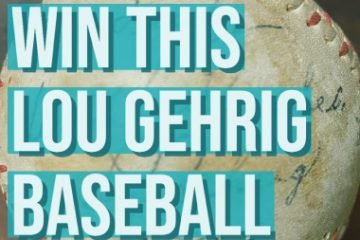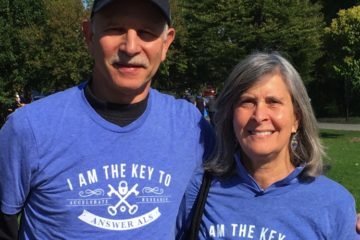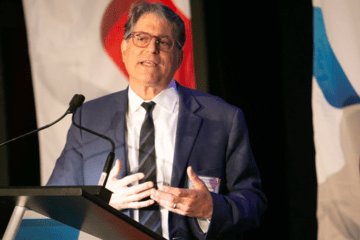
Sep 15, 2014
By: Bill Gates
Like a lot of people, I dumped a bucket of ice water on my head a few weeks ago to call attention to the disease ALS. I soon got the chance to learn more about it—in a very inspiring way.
Shortly after I made the ice-bucket video, I heard that Steve Gleason, a former pro football player who was diagnosed with ALS in 2011, was visiting the Seattle area. He stopped by my office recently to talk about the disease, and to show me how he uses technology to break through some of the barriers it creates. It was really impressive to see how he overcomes the challenges of having ALS.
You may know about Steve from the Super Bowl ad he made with Microsoft this year, or from the very moving story that ESPN did on his friendship with the guys in Pearl Jam. ALS—which gradually destroys the brain’s ability to control any of the body’s muscles—has robbed him of the ability to walk, move his limbs, speak, or breathe on his own. Steve hasn’t lost an ounce of his intellect or personality, but he is trapped inside his own body. His wife, Michel, told me the ALS community calls it being locked-in.
Steve said that for ALS patients, the right support and the right technology are key to living a productive life. Today his window on the world is a tablet computer—a Microsoft Surface Pro 3—working in tandem with an eye-tracking device made by Tobii. (The eyes, I learned, are usually some of the last muscles to be affected by ALS.) Just by looking at different areas of the Surface, Steve can pull up an on-screen keyboard, open apps, drag and drop icons, scroll, and more. He can write e-mails, watch videos, tweet, and post to Facebook.
During our meeting, Steve used this setup to write comments that were spoken aloud by a speech synthesizer. At one point we all laughed as he had fun making the voice speed up and slow down to ridiculous levels. He also asked me to name a song, and then quickly used Spotify to pull up “My Favorite Things,” from The Sound of Music. It was the John Coltrane version.
Steve thinks the hardware and software can get even better, which is what brought him to Seattle. He’s working with Microsoft to develop various ideas that they hope will one day benefit lots of ALS patients. For example, they’re looking at ways to control a wheelchair using the Surface. Right now, Steve needs someone else to steer his chair. They’re also trying to improve the predictive text part of the software, which guesses what word he’s writing. Steve hopes it will one day be so accurate that he’ll be able to carry on a real-time conversation with his wife.
Steve has a smart way of looking at the fight against ALS: in the short, medium, and long term. The short-term goal is to help people with ALS now. Steve and Michel’s foundation, Team Gleason, raises money to buy tablets with eye-tracking equipment, which cost around $14,000 each, for patients who can’t afford them. They also help patients take trips across the United States and around the world—another way of breaking through that locked-in feeling.
The medium-term work is to continue improving the technology for ALS patients. “Our intention,” Steve told me, “is to create a mechanism to fast-track the development of innovative products, to transform as many lives in as short a time frame as possible.”
The long-term project, Steve said, is to find a cure. He would like to see more money focused on research, and also more coordinated use of that funding. Last year Team Gleason hosted a summit in New Orleans where patients, advocates, doctors, and researchers began work on a five-year plan for harmonizing efforts toward a cure.
“ALS is so complex, it has to be approached like the original moon shot,” Steve told me, explaining the five-year plan. “President Kennedy did not ask for more studies on how to get to the moon. He empowered a large-scale, collaborative, and goal-oriented initiative to land on the moon.”
Steve and his team are doing great work. I’m really glad I got the chance to meet him and learn more about ALS. The Ice Bucket Challenge made a lot of people more aware of this disease, and I hope we’ll eventually be able to look back on it as a key moment in the fight against ALS
Per ex omnium denique, et quem ignota ius, paulo delectus ei nam. Ad duo vivendo detraxit petentium. Cum exerci consetetur ex, duo suas maluisset accusamus et, veri everti feugiat sed et. Modo delectus id pro, ignota ponderum verterem pro an. Appetere voluptaria ne eam, purto virtute fuisset at usu, sit et atqui labitur. Mel ad porro legimus, case summo ei eam.



